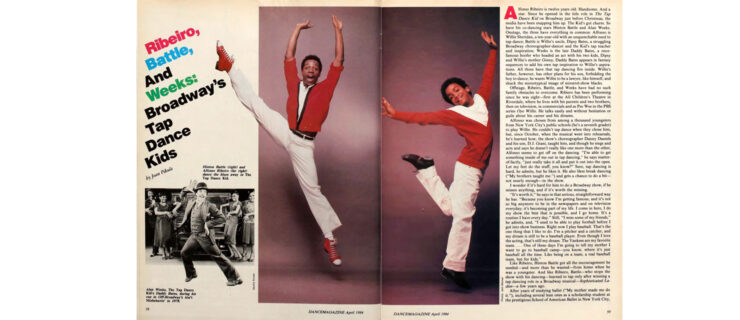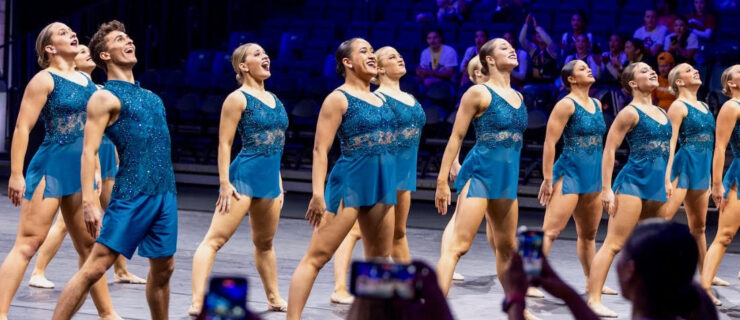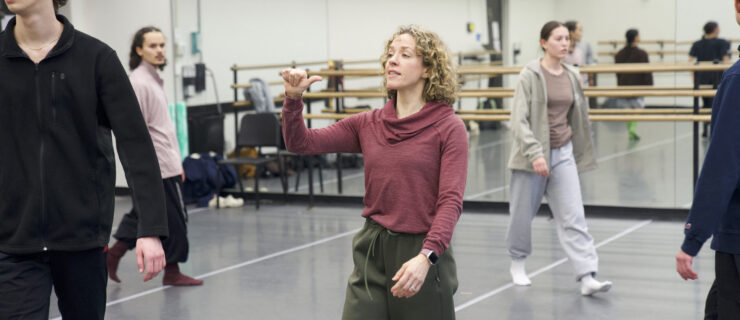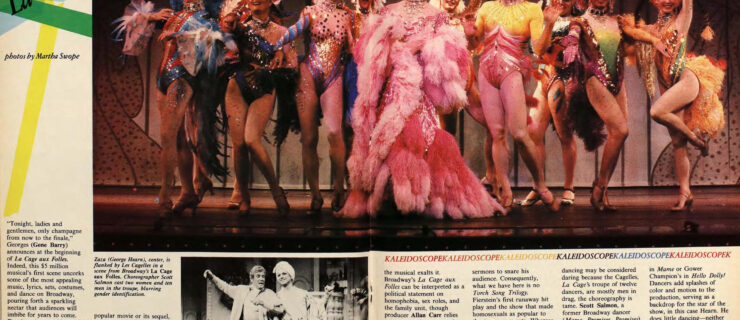DM Recommends
The Prince of Desire
For Nureyev, ballet was the one true love.
Nureyev: The Life
By Julie Kavanagh
New York: Pantheon; 2007. 800 p.,
illustrated, $37.50.
It’s hard to believe there’s now a generation, maybe two, that’s never heard of Rudolf Nureyev. Starting in the ’60s, his surname was a household word combining the high culture of Maria Callas, the iconoclastic glamour of Andy Warhol, and the erotic kick of Mick Jagger. Nureyev was a dancer, and when he defected from East to West in 1961, leaving Russia’s Kirov Ballet for solitary stardom in the free world, he put classical dance smack at the center of popular culture. With the Soviet Union and the United States still locked in the Cold War, Nureyev, overnight, became a worldwide symbol of freedom. Talk about a spotlight.
And was any face better made for the spotlight, the flash bulb, than Rudi’s? He had the high cheekbones of a big cat, the rapt eyes of a Romantic poet, the sensual lips of a cad. It was the decade of the photographer, and Nureyev was like solar heat, answering the camera with his own Promethean fire. His burning desire was to dance every day, every role, everywhere. His life, in fact, was about desire—his own desire for the stage, for stardom, and the world’s desire for him. His first performance after defection was in The Sleeping Beauty—the role of Prince Désiré.
Here in the West, we tend to think of Nureyev’s life as having begun on June 16, 1961, the day of his defection. And in the newsreels and photographs he does look a babe, an orphaned fledgling suddenly finding flight (his second role in the West was Sleeping Beauty’s Bluebird—notice, by the way, how happily metaphors fit this dancer). Within months he formed a now-legendary partnership with Margot Fonteyn, 19 years his senior. The maternal calm she brought to his youthful burn added a powerful poetic dimension to their stage chemistry. Nureyev, however, wasn’t as impressionable or innocent as the imagery suggests. In a fascinating new documentary, Nureyev: The Russian Years (not slated yet for release on DVD), the prehistory of Nureyev, from his birth on a Trans-Siberian train in 1938 to his Paris defection, is set before us. We see that he was already driven, opinionated, and dead set on getting his way.
He had to be. The documentary takes us to the rural city of Ufa, where Nureyev grew up in grinding poverty. It shows us the kind of local folk dance club he joined and tells of the visit to Ufa’s opera house, Rudi’s first glimpse of ballet, which ignited his passion for classical dance. Despite his father’s deep disapproval, Rudi went to ballet class on the sly. By the age of 17, through his own implacable push, he made his way to the Vaganova Academy in St. Petersburg, and once there pushed further into the fabled class of Alexander Pushkin. Interviews with roommates and friends reveal a teen who lived and breathed ballet. “I will be the number one dancer in the world,” he declared. Arrogant, yes, but he was willing to sacrifice everything to that goal.
The clips of Nureyev dancing, many of them never seen before, show us an arrowy young man with a tiny waist and an ardent intensity. His chainés are whip-quick (and would become a signature), his grand jetés not long and reaching but high and hilly. His double tours en l’aire are clean, plumb, but the fifth positions from which he takes off are a mess, something between third and fourth position. Witnesses to these early Kirov performances all remark on the wild excitement, the exotic beauty, of Nureyev. From day one, even when technically rough, he had presence. The Royal Ballet’s Ninette de Valois would later say it was the “noble dignity” of his curtain call that convinced her of his greatness.
Much of the new information on display in Nureyev: The Russian Years comes from Julie Kavanagh, the author of a new biography, Nureyev: The Life. This 800-page book was 10 years in the making, and it is the most complete account of this singular man yet written, a view in-the-round buttressed by extensive quotes from dancers, choreographers, lovers, and friends. The most striking revelation is the news that Nureyev had a secret gay relationship while at the Kirov, a crime that if discovered could have sent him to jail. But due to his personality—demanding, contrarian, insulting to Kirov superiors—Nureyev was already in trouble in Russia. The description of the Paris defection, beautifully choreographed and paced by Kavanagh, comes as a fait accompli, a choice that wasn’t a choice.
In Kavanagh’s superb 1996 biography of Sir Frederick Ashton, one felt her affinity with her subject, both she and Ashton being English and having a similar light touch. Here, she’s had to give herself over to an alien sensibility—Nureyev’s cruder character, his egocentric and ultimately self-isolating will. He’s a heavier subject with a narrower vision, heat without light, and he burned himself out early, constantly hopping from one company, one choreographer, to another—over 150 performances a year. Promiscuity was an after-hours dynamic as well. Nureyev had a handful of love affairs, the most serious with the Danish danseur noble Erik Bruhn, but he had an endless hunger for anonymous contacts in gay bars and baths. The tragedy, one he shared with countless others, was that he lived in the era of HIV. Nureyev died of AIDS in 1993, at the age of 54.
This is a life that begs for analysis alongside the acclaim. For instance, the compulsive artistic and sexual freedom Nureyev insisted upon, was this the existential destiny of a defector or an intrinsic night blindness? Was his rude and often brutal need for control (a trampling, of course, on the freedoms of others) a mean streak, an imbalance, or a vestige of the Soviet state that was his cradle? And in sacrificing all to art, did he not also sacrifice the emotional complexity from which art draws life? Kavanagh’s unflinching biography awakens these questions in the reader. One wishes she herself, with the intimacy and instincts of 10 years research, had ventured answers.
And what, after all, was Nureyev’s artistic legacy? Lasting choreography? No. Pedagogical or technical advances? Not exactly. He had a distinctive style, a tempestuous attack that matured into an elaborate correctness, a kind of imperious portraiture, but this was a form of commitment, not an organic advance. As for his invigoration of the male’s place in classical dancing, well, yes, it was true at the time, but even then balletomanes questioned his hogging of the limelight. And by the early ’70s, when Nureyev toured with the National Ballet of Canada in The Sleeping Beauty, even I, a teenager, could see that New York’s Edward Villella was a better dancer than the world’s Rudolf Nureyev. And still he was crowned with superlatives.
Nureyev was not an artist of refined interpretations or expressive depth. He was, let us say, a blast of energy, driven and amoral, frightening and magnetic, pushed through the prism of classical dance. He was a species of erotic phenomenon that comes rarely to any art form—Valentino in the ’20s, Elvis Presley in the ’50s, Michael Jackson in the ’80s—inspiring sobs and sighs and a frantic mass grab for tickets. What lifts Nureyev above these others was his never-ending desire for, and devotion to, his medium. He wore his love of ballet like a mantle, and for a time he made that love matter to millions. That was his greatest gift.
Laura Jacobs, dance critic of
The New Criterion, is the author of Landscape with Moving Figures: A Decade on Dance.




